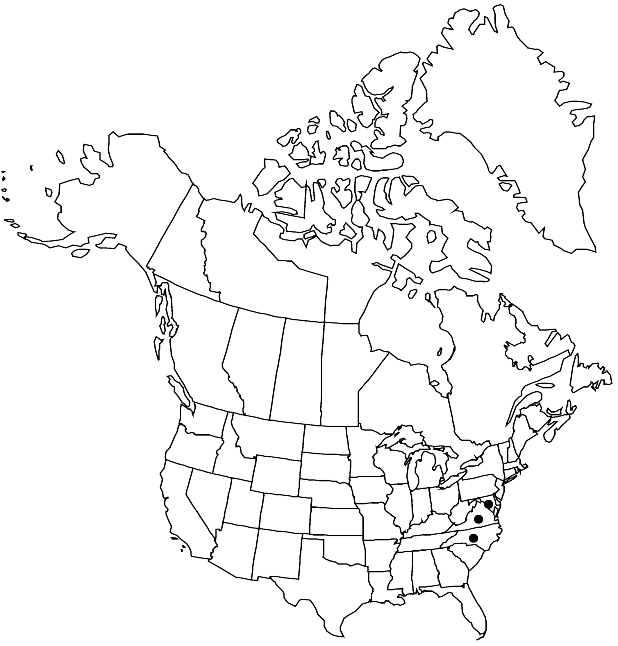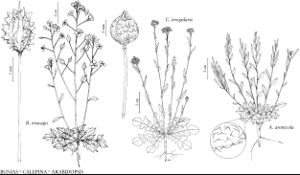Difference between revisions of "Calepina irregularis"
in H. Schinz and R. Keller, Fl. Schweiz ed. 2, 1: 218. 1905.
FNA>Volume Importer |
FNA>Volume Importer |
(No difference)
| |
Revision as of 20:23, 24 September 2019
Stems several from base, (1–)2–8 dm, unbranched or branched distally. Basal leaves early rosulate; petiole (0.2–)1–3.5(–6) cm; blade obovate, spatulate, or oblanceolate, (0.8–)2–5(–9) cm × (3–)10–30 mm, base attenuate. Cauline leaves: blade oblong to lanceolate, (1–)2–7(–8) cm × (4–)10–20(–30) mm, base sagittate or amplexicaul, apex obtuse to acute. Racemes with straight rachis. Fruiting pedicels straight or curved upward, (3–)5–10(–13) mm. Flowers: sepals oblong or ovate, 1.2–2 × 0.5–1 mm; petals (1.5–)2–3 × 0.5–1.5 mm, unequal, abaxial pair larger than adaxial (longer than sepals); filaments 1–1.5 mm; anthers ca. 0.3 mm; gynophore 0.1–0.2 mm. Fruits 2.5–3.5(–4) × 2–3 mm, abruptly tapering to a conical, beaklike apex, 0.5–0.8 mm. Seeds brown, 1.3–1.6 mm. 2n = 14, 28.
Phenology: Flowering Mar–May.
Habitat: Fields, waste places, roadsides
Elevation: 0-200 m
Distribution

Md., N.C., Va., Europe, c, sw Asia, n Africa.
Discussion
The fruits of Calepina irregularis and Neslia apiculata are remarkably similar; the two can easily be separated by the presence of white instead of yellow petals and by the absence of indumentum in Calepina.
Selected References
None.
